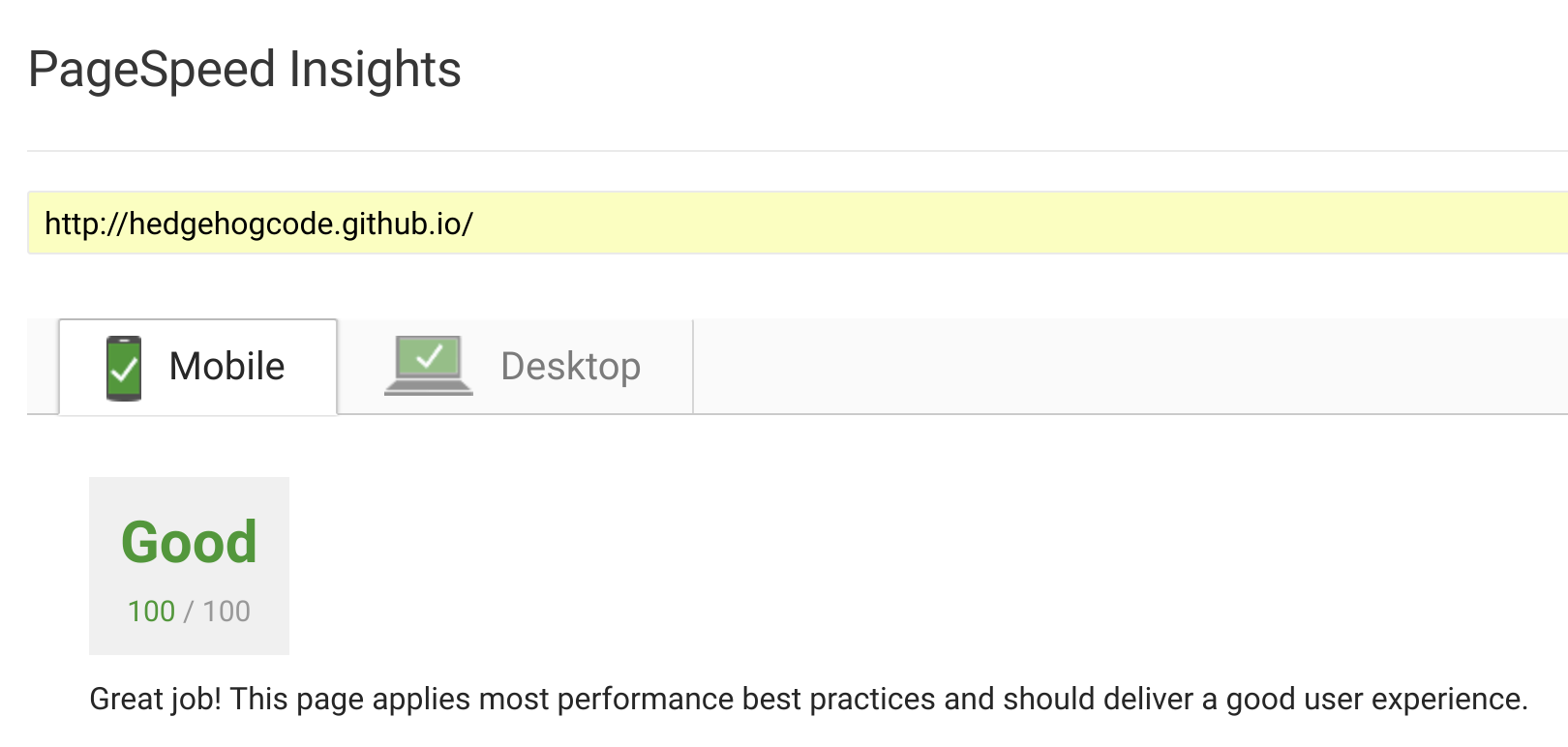I recently decided that I want to create a new website for my personal use containing some static pages and a blog. I ended up using the awesome static site generator Jekyll. Additionally, I tuned the loading times a lot which gave me a result of 100 points in Googles PageSpeed Insights.
Why?
During my usual nerdy day, I sometimes discover things I want to share. This blog is supposed to be the place. I hope that I will use it...
Additionally, I had a website for a while now but it used WordPress and as a computer scientist, I hate it. It's so much more intuitive for me to write a post in a markdown file on my computer and run git add, git commit and git push to publish it than logging into a slow backend and writing there. It just fits my usual workflow better.
What technologies do I use?
Jekyll
Jekyll is awesome as well. I can write my content in markdown :heart_eyes: and serve static compressed HTML and CSS files. (Take a look at the source repository if you want to know how I compress HTML files). I wouldn't consider myself a web developer but I believe to know that this is a good thing for loading times.
During my transition from a fully featured CMS to simple static site generator, I somehow thought I should keep using a CMS but a smaller and nicer one. A lot of googling led me to grav. A plaintext CMS which I think is awesome! I almost ended up using it but Jekyll is just too great :wink:.
Travis
I use Travis to build the static page and upload it to my server. Maybe I will write another article on how exactly I did this.
Why not GitHub Pages?
I already have my website in a GIT repository on GitHub and could just use GitHub Pages to host it. But the problem is that I couldn't use https for my own domain. And I am all for https everywhere.
How to make it fast
Somehow I really wanted to get the 100/100 score in Google's PageSpeed Insights. I just wasn't happy with a not perfect score. And I got it :tada::

I realized that it's not to hard but also not trivial to create a fast website. (At least for a small and easy page as mine)
All I did was:
Inline CSS in the HTML file
This can be done by moving the main SCSS file to _includes and adding the following liquid code to the HTML head:
<style>
{% capture style %}
{% include style.scss %}
{% endcapture %}
{{ style | scssify }}
</style>Luckily my CSS is pretty small so I don't have to find out what of it is critical.
Use loadCSS to load additional resources asynchronously
I copied the laodCSS.min.js into my _includes folder and used it like this:
<script>
{% include loadCSS.min.js %}
/* Font-awesome */
loadCSS("https://maxcdn.bootstrapcdn.com/font-awesome/4.7.0/css/font-awesome.min.css");
/* Google Fonts */
loadCSS("https://fonts.googleapis.com/css?family=Fira+Sans+Condensed:900|Open+Sans|Source+Code+Pro");
</script>But I don't want my website to depend on javascript, so I added a fallback if javascript is disabled:
<!-- Fallback resource loading without javascript -->
<noscript>
<!-- Font-awesome -->
<link rel="stylesheet" href="https://maxcdn.bootstrapcdn.com/font-awesome/4.7.0/css/font-awesome.min.css">
<!-- Google Fonts -->
<link rel="stylesheet" href="https://fonts.googleapis.com/css?family=Fira+Sans+Condensed:900|Open+Sans|Source+Code+Pro">
</noscript>Use external resources
At first, I copied font-awesome into my project as they suggest on their "Get Started" page. But the GitHub Pages server gives the resource only a caching header of 10 minutes so font awesome needs to be downloaded from the browser way to often even though I would probably never change anything.
The solution was pretty easy... I just got fontawesome from Bootstrap's CDN:
loadCSS("https://maxcdn.bootstrapcdn.com/font-awesome/4.7.0/css/font-awesome.min.css");Conclusion
It was a nice project but I am glad that I am not a web developer. I just never get HTML and CSS to do what I want and need forever to build a working page. Probably I solved some problems in an ugly way or didn't do things the 'nice' way. I would love tips and advice!